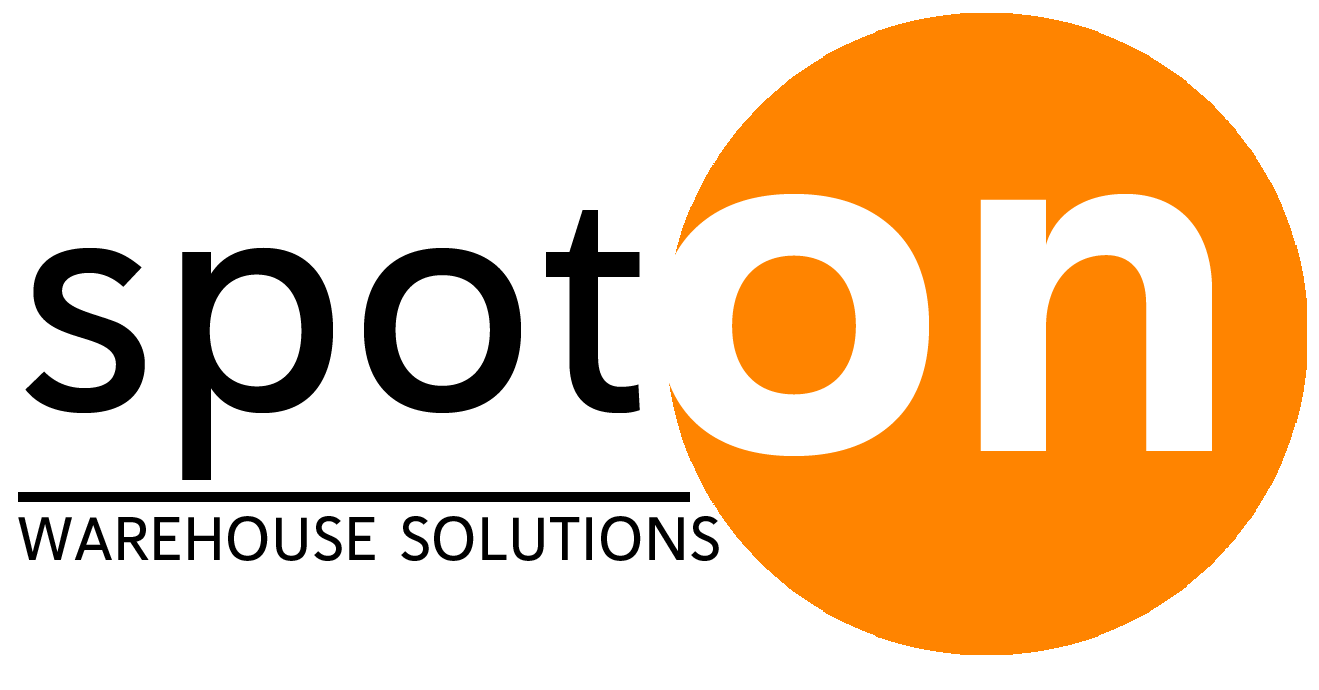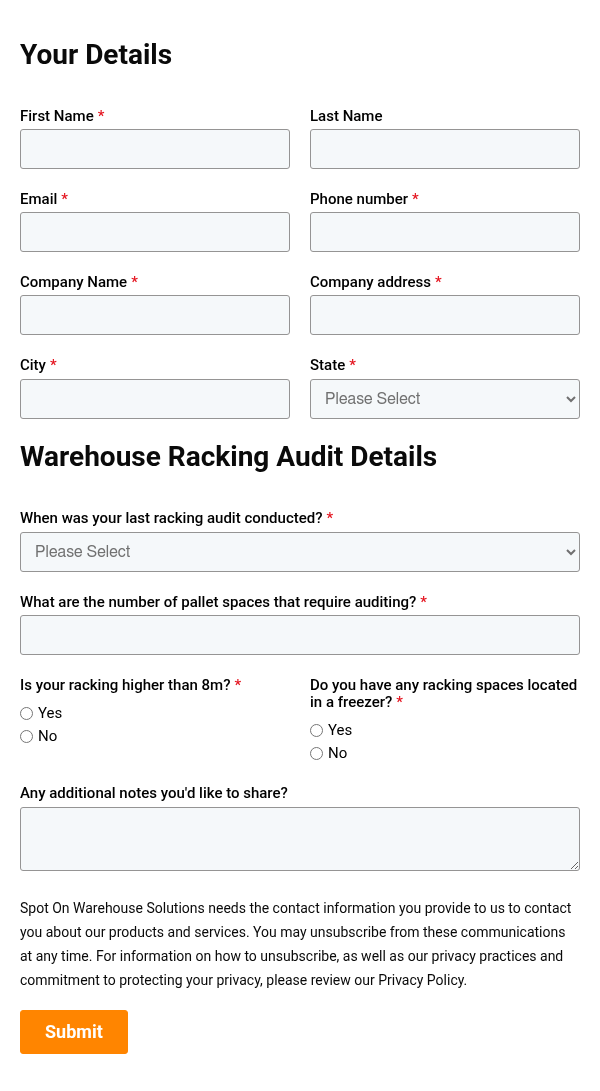The Importance of Annual Pallet Racking Audits
Under Australian standards for pallet racking AS4084-2023, all warehouses with pallet racking must undergo an annual third-party inspection. Failure to comply can result in hefty fines, insurance annulments, or even legal consequences. But compliance doesn’t have to be overwhelming—Spot On Warehouse Solutions makes it simple. With our expert guidance, detailed digital reporting, and clear, practical feedback, we ensure your warehouse remains safe, compliant, and stress-free.

Special offer for new customers!
Book an Inspection & Get 20% Off Forklift Servicing!
Schedule your first pallet rack inspection and get 20% off your next forklift service*. At Spot On, compliance is just the beginning—we’re here to keep your warehouse safe, efficient, and well-maintained in more ways than one.
T&C's Apply
Our Inspection Process
Consultation & Scheduling
Once you request a pallet racking audit, our team will quickly generate a quote for you. Pricing depends on the size and quantity of your locations.
Onsite Inspection Conducted
At a convenient time, our qualified racking inspector will conduct an audit. They will check the condition of the racking in accordance to the 4084-2023 Australian standards for pallet racking.
Report & Compliance Support
After the racking inspection, you will receive a comprehensive digital report outlining any compliance breaches and areas for improvement. Our team can also recommend solutions to help you stay compliant.
Certificate Issued
After all identified issues and breaches have been resolved, we will supply a compliance certificate confirming that your racking meets the AS4084-2023 pallet racking safety standards.

We Work Around Your Schedule
Compliance checks don’t have to disrupt your productivity. We work around your schedule to ensure minimal interruption to your operations.


Simple Repeat Bookings for Future Compliance
Choosing Spot On Warehouse Solutions is a smart choice to ensure ongoing compliance and aligns to your strong commitment to workplace safety. No longer will you need to keep track of compliance dates, our team will set reminders for upcoming audits, so you never miss a pallet racking inspection again.


Clear Reporting & Secure Records
With Spot On Warehouse Solutions, you’ll receive transparent, easy-to-understand reports that highlight compliance status, risks, and recommended actions—without the guesswork. Our digital reporting system ensures that all pallet racking inspection records are securely archived for easy retrieval whenever you need them.

compliance made easy
Schedule Your Pallet Racking Inspection Today!
Frequently Asked Questions
Check out our FAQs for additional information on pallet racking inspections. Feel free to reach out for more information.
How often does pallet racking have to be inspected?
According to Australian standards for pallet racking (AS4084-2023), all warehouses containing pallet racking must be audited a minimum of once annually. Additional inspections are recommended.
Who is responsible for warehouse racking compliance?
The updated standard reinforces that maintaining storage equipment safety is the end user’s responsibility. It requires regular inspections to ensure compliance, with any damage promptly reported, documented, and addressed to uphold workplace safety.
Why do inspections matter?
Beyond regulatory compliance, regular racking inspections play a crucial role in enhancing warehouse safety and extending the lifespan of your equipment. Identifying and addressing issues early helps prevent costly repairs, accidents, and operational disruptions.
What does a pallet racking inspection include?
Regular racking inspections are essential for maintaining a safe and compliant warehouse environment. These checks ensure that beams, uprights, baseplates, and frames are free from damage, corrosion, or excessive wear. Inspectors also verify that racking is stable and properly aligned, preventing structural risks. Additionally, they confirm that racks are used correctly, not overloaded, and clearly labelled with weight capacities to minimise hazards and ensure safe operations.










